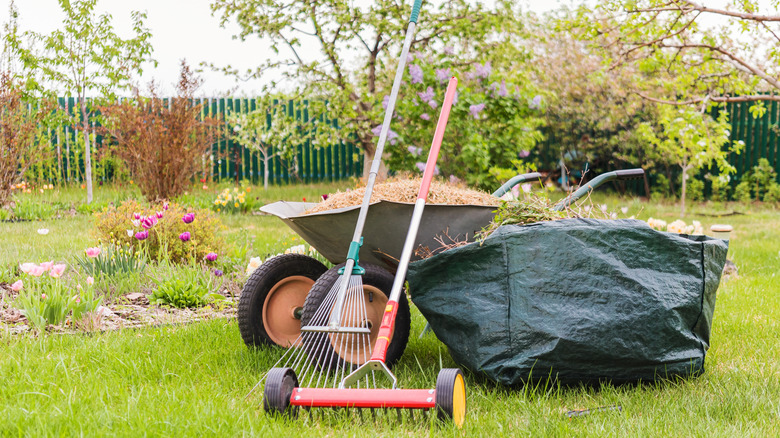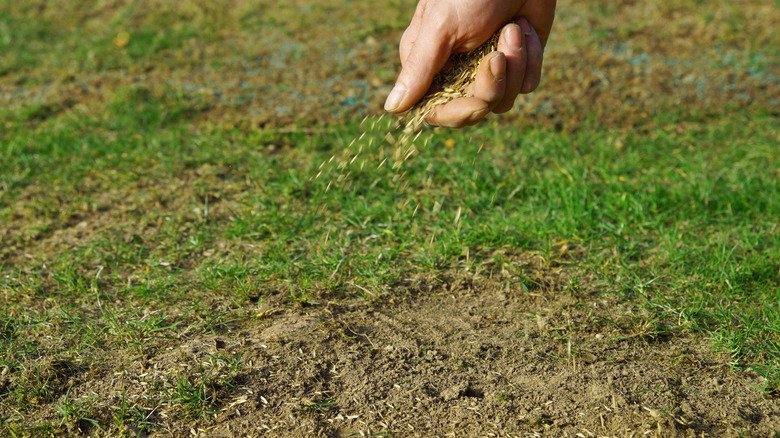Why Fall Is The Best Time To Dethatch The Cool-Season Grass Lawn
If you live in a northern state or the upper Midwest, there's a good chance cool-season grass is growing in your yard. Because this grass type experiences the most growth when daytime temperatures hover between 60 and 75 degrees Fahrenheit, autumn's mild weather makes it the best season to carry out yard work for preparation of a green, lush lawn come spring. One important fall task you might need to undertake is dethatching—the process of removing dead grass and organic matter that has accumulated on top of the soil.
Dethatching cool-season grass should be done once temperatures cool down and at least four weeks before the first frost, making early fall the perfect time to carry out this chore. However, before you pull out your essential lawn tools, you first need to determine whether or not this task is necessary. When thatch is less than ½ inch thick, it's actually beneficial because it helps the soil retain moisture. There are two instances where it makes sense to dethatch: When the thatch exceeds ½ an inch in thickness, or before overseeding, which helps your grass seed make better contact with the soil.
Fall temps allow for grass recovery
Dethatching, while beneficial in many cases, can cause stress to the lawn since the process often pulls up some healthy grass roots along with the thatch. Fall is the best time to dethatch cool-season grass because it allows plenty of time for your grass to recover since the grass roots are actively growing. It's also the best time of year to overseed cool-season grass, a process that involves adding new grass seed to the lawn to fill in bare spots and improve its durability. Performing both tasks in the early fall gives your lawn ample time to establish a new root system and fill bare spots, setting you up for a healthy, thick lawn by spring.
Did you miss the early fall window for dethatching? No worries. The second-best time to dethatch your cool-season grass is in early spring. However, you should be aware that dethatching in the spring could result in more weeds appearing in your lawn, making it necessary to apply a pre-emergent herbicide to prevent weed growth. Also, avoid dethatching dormant grass as it's less likely to recover and may require reseeding.

